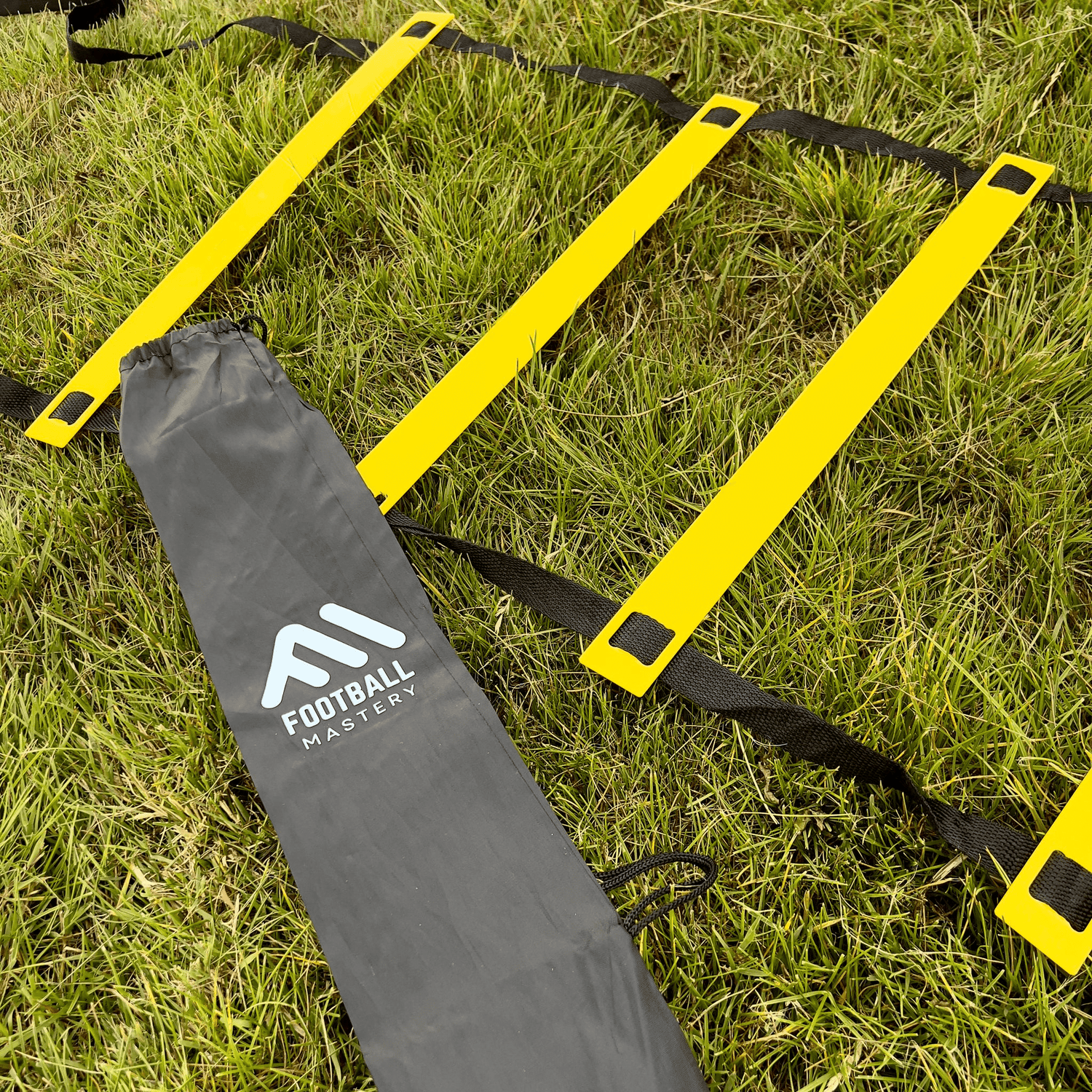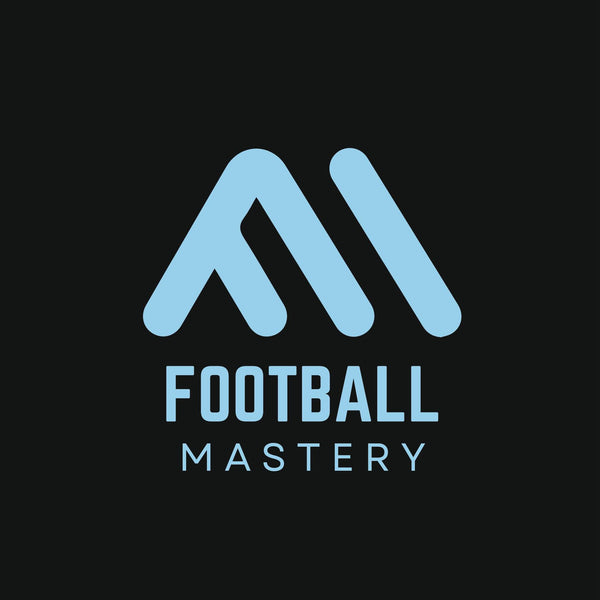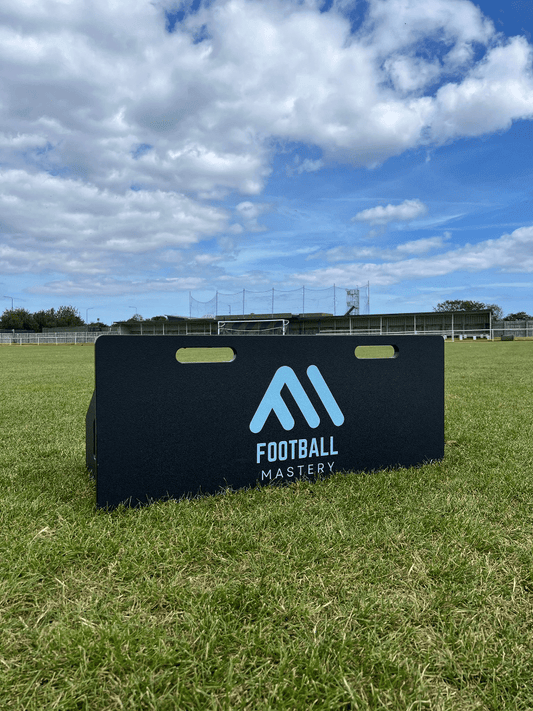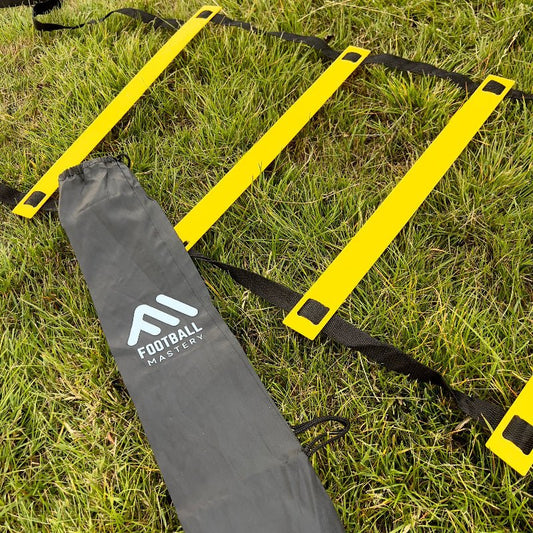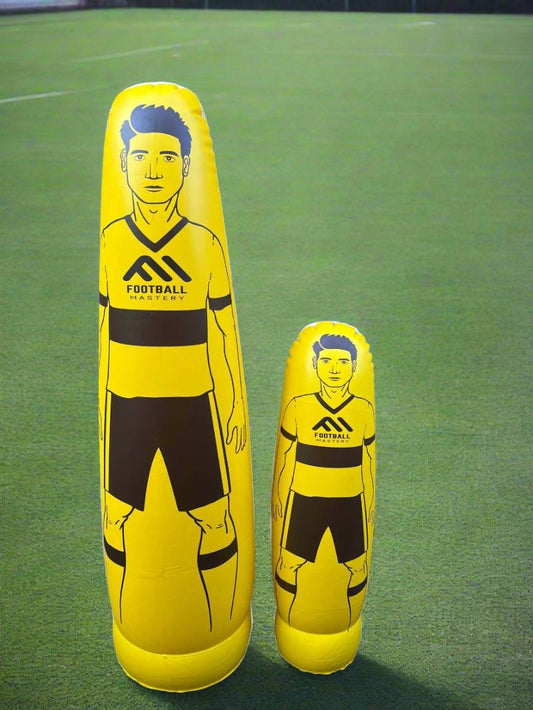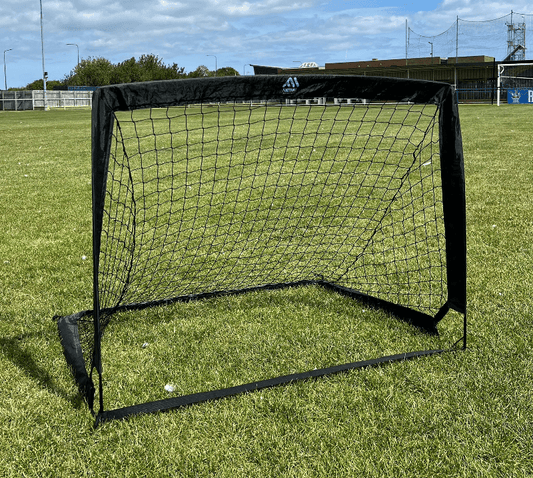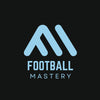
Solo Training Made Easy with Football Rebound Boards
Share
Sharpen your technique, master your first touch, and elevate your game—all without needing a training partner. This article explores how football rebound boards can transform your solo training sessions. Discover drills that enhance ball control, shooting accuracy, and reaction time, learn how to set up a productive home training environment, and find the ideal rebounder for your needs, whether you're just starting or already on your journey to mastery.
Why Rebound Boards are the Unsung Heroes of Football Training
When it comes to individual training, rebound boards are easily one of the most underrated yet powerful tools in a footballer’s arsenal. These simple yet effective training aids allow players of all levels to simulate match-like scenarios, repeat technique-enhancing drills, and build muscle memory—without the need for a training partner.
At Football Mastery, we’ve designed our rebounders with one goal in mind: to make solo training accessible, effective, and engaging. Whether you’re working on your weak foot, tightening your first touch, or just looking to get more touches on the ball in your back garden, the right football bounce board can help you get there faster.
What Makes a Good Rebound Board?
A quality rebound training aid should do more than simply return the ball. To truly enhance solo training, it should:
- Mimic realistic ball behaviour on return
- Be portable for quick setup and use in various locations
- Allow for adjustable angles to create dynamic rebounds
- Have a durable frame capable of withstanding consistent, high-intensity strikes
- Be suitable for multi-surface use, from turf to garden grass
Take our Football Mastery Rebound Board, for example. It's engineered with a spring-loaded face for consistent ball return and built with portability in mind, making it perfect for use at home or on the pitch.
The Benefits of Solo Training with a Rebounder
Solo practice with a first-touch rebounder isn’t just about kicking a ball at a wall. It's about repetition, technique refinement, and skill development through:
1. Ball Control & First Touch
Quick control under pressure is vital. Practising with a rebounder teaches your feet to respond instantly to unpredictable bounces, improving:
- First-touch control
- Foot-eye coordination
- Reaction time
- Touch control exercises
“Every touch is a chance to improve, every bounce a challenge to overcome.”
2. Shooting & Finishing
Set the adjustable angle to simulate rebounds in the box and improve your:
- Follow-up shots
- Volley practice
- Finishing under pressure
- Shooting accuracy
Add a goal target behind your rebounder to simulate scoring scenarios. Mix in a crossbar challenge for fun and accuracy.
Drills That Deliver Results
One of the most effective ways to build consistency and muscle memory is through repetitive drills. Here are a few that fit seamlessly into any solo session:
One-Touch Wall Passes
Pass the ball into the rebound board and control the return with a single touch before passing again. Focus on alternating feet to build weaker foot training.
Reaction Control Drill
Stand 3-5 metres from the board and strike the ball. As it returns unpredictably, control and pass it again as quickly as possible to simulate real-time match reactions.
Shooting Shuffle
Set the board at an angle. Strike the ball, move laterally as it rebounds, and shoot at goal. Helps improve agility, quick decision-making, and finishing under pressure.
Want to take your drills to the next level? Our Football Mastery Bundles combine rebounders with cones, agility ladders, and resistance bands—everything you need for full-body, game-like sessions.
Designing Your Solo Training Setup at Home
One of the biggest advantages of using a football rebound board is how easily it fits into your daily routine—no coach, no teammates, no problem. All you need is a few square metres of space, your rebounder, and a ball.
Best Locations for Home Training:
- Back garden – Ideal for young players or casual sessions
- Driveway or patio – Harder surfaces increase ball speed and test reaction time
- Garage door alternative – Safer and more consistent than kicking against walls
- Indoor sports areas – Perfect for year-round technical sessions
Tip: Place cones or markers around your rebounder to simulate defenders and guide movement, turning your space into a personal skill zone practice area.
For a compact yet highly effective solution, our range of rebound boards offers flexible setups for tight spaces while maintaining pro-level training benefits.
Age-Specific Solo Drills
Solo training isn’t one-size-fits-all. Players of different age groups require different focuses and difficulty levels. Here's how to tailor your rebounder sessions based on age or experience.
Young Players (Aged 6–12)
Focus: Technique improvement, ball familiarity, fun repetition
- Dribbling drills around cones with passes into the rebounder
- Juggling to build coordination and confidence
- Rebound-based games like target practice
Teens & Intermediate Players
Focus: Muscle memory, speed, agility
- One-touch passing at varying distances
- Reaction drills after rebound returns
- First-touch and volley sequences
Adults or Advanced Players
Focus: Match scenario simulation, cognitive load
- Combine rebound drills with movement patterns
- Situational training: control → dribble → finish
- Precision volleys and passing accuracy under pressure
"The best players train when nobody’s watching—repetition is how brilliance is born."
Rebounders for Goalkeepers: The Secret Weapon
Rebound boards aren’t just for outfield players. For keepers, they provide a dynamic and adaptable tool to improve:
- Shot-stopping reflexes
- Footwork agility
- Distribution skills
- Positioning in rebound situations
Set the board at a steep angle to simulate unpredictable high balls or horizontal rebounds. This forces goalkeepers to adjust quickly, improving reaction time and tactical awareness in high-pressure situations.
You can even design sessions using our football training equipment bundles which pair perfectly with goalkeeper rebound drills—especially when simulating match-day warm-ups.
Adjusting Difficulty to Match Your Growth
As your skills evolve, your rebound board should evolve with you. The ability to customise difficulty ensures consistent progression without needing new equipment.
Ways to Increase Challenge:
- Increase distance from the rebounder
- Switch to one-touch passes
- Use your weaker foot only
- Adjust the rebounder’s angle to vary ball height and spin
- Add a time limit or scoring system to each drill
These adaptations train improvisation and creativity, helping you transfer technical drills into live match performance.
“Great players don’t just repeat movements—they challenge themselves with every rep.”
Dynamic Rebounder Combinations
To truly mimic real-game chaos, combine your rebounder drills with other equipment:
- Use agility ladders between touches to build foot speed
- Add a resistance band around your waist to improve explosive movement
- Combine passing with directional cone dribbling to enhance spatial awareness
Training this way blends technical refinement with physical conditioning, ensuring you’re ready to perform at match intensity.
Build Your Own DIY Rebounder (If You're Handy)
While our expertly engineered rebounders at Football Mastery are designed for optimal performance, some players enjoy the process of building a DIY rebounder at home. Whether it’s a weekend project or a budget-based decision, creating your own can still offer solid solo training opportunities.
Basic DIY Rebounder Materials:
- Plywood board or tension net
- Hinged frame (metal or timber)
- Bungee cords or springs for ball return
- Adjustable legs for angle changes
- Turf anchors or stabilisers
Be sure to test your setup for stability and rebound consistency. The bounce won’t be as refined as a professional product, but it can be a good start for beginners. For a long-lasting, ready-to-use version, our official rebound board remains the go-to choice trusted by grassroots and academy players alike.
The Psychology of Rebounder Training
The physical gains of rebound boards are obvious, but the mental edge they provide is equally valuable. In high-pressure matches, milliseconds matter—and solo training with rebounders strengthens your mind as much as your feet.
Here’s how:
- Quick decision-making: Fast rebounds simulate real-game speeds, training the brain to react with precision
- Cognitive flexibility: Adjusting to unpredictable returns mimics opponent behaviour and enhances tactical awareness
- Improvisation: Every rebound is slightly different, requiring creativity on the fly
- Concentration under fatigue: Repetitive drills help maintain technical quality when tired, a key trait in elite players
“Your brain is the first touch before your foot ever gets involved.”
Incorporating varied angles, movement, and progression into your sessions pushes both your technical and mental limits, reinforcing game-readiness with every rep.
Rebound Boards for Long-Term Development
While they offer immediate feedback and fast results, rebounders also shine in long-term player development. As your strength, coordination and game understanding grow, the rebounder grows with you.
Rebound boards support:
- Skill stacking: Adding layers to your training, like first touch + movement + finish
- Position-specific training: Wingers can practise driven passes; midfielders can master quick turns and transitions
- Consistent feedback loops: The rebound doesn’t lie—bad passes or poor control will be instantly revealed
- Off-season and lockdown training: Maintain sharpness when team sessions aren’t possible
We’ve seen countless players use our products over several seasons, adapting their routines as they move from academy to senior squads. It’s this adaptability that makes rebounders such an all-round training tool.
Final Thoughts: Make Solo Training Your Competitive Edge
Mastering football doesn’t require a stadium or full coaching staff. Sometimes, all it takes is a ball, a bit of space, and the right tools. Rebound boards allow you to train smarter, harder, and more creatively—on your own schedule.
Whether you're just starting your journey or pushing for academy or semi-pro levels, investing in a quality rebounder pays off in touches, technique, and tactical sharpness.
Explore our full collection of Football Mastery rebound boards to find the right fit for your needs—or upgrade your training regime entirely with our curated Football Mastery Bundles.
In Summary:
- Rebound boards are essential for solo practice and individual training
- They support technical, physical, and cognitive development
- Ideal for home training, back gardens, or pitch use
- Equip players with better ball control, quicker reactions, and sharper decision-making
- Suitable for all age groups and skill levels
- Easily customisable to scale difficulty and simulate real-game dynamics
Solo Training Made Easy with Football Rebound Boards isn't just a tagline—it’s a philosophy. Your development is in your hands (or, more accurately, at your feet). Train with purpose. Train with Football Mastery.
Frequently Asked Questions (FAQ)
1. What age is best to start using a rebound board for football training?
Rebound boards are suitable for players as young as 6 years old. For younger players, focus on basic ball familiarity, soft touches, and confidence-building drills. As players mature, the rebound board can be used for more advanced technique and reaction-based training.
2. Can rebound boards be used for other sports or just football?
While designed specifically for football, rebound boards can also be adapted for sports like futsal or even hand-eye coordination drills in rugby or goalkeeping for netball. However, the angles and rebound behaviour are optimised for football-specific use.
3. Will a rebound board damage my garden or flooring?
No. Most modern rebounders, including our Football Mastery models, are designed for multi-surface use, including grass, artificial turf, and indoor surfaces. They sit on rubber or non-marking feet and don’t require anchoring that damages surfaces.
4. How do I clean or maintain my rebound board?
Simply wipe down your rebound board with a damp cloth after use, especially if it’s used outdoors. Check moving parts or hinges every few months to ensure optimal performance, especially if your board is foldable or angle-adjustable.
5. Can I use a rebound board without much space?
Yes. Rebound boards are incredibly versatile. You only need about 3–4 square metres to train effectively. You can even angle your rebounder to reduce the return distance in tighter spaces like garages or driveways.
6. Is it suitable for goalkeepers to practise alone with a rebounder?
Absolutely. Goalkeepers can improve their reaction time, footwork, and shot-stopping by using rebounders set to unpredictable angles. For even more variation, try adding a second rebounder or combining with resistance training tools.
7. How do rebound boards help improve weaker foot performance?
Because rebound boards return the ball consistently, they allow for high-repetition, low-pressure training. This lets players practise left/right foot control, volleys, and passing equally—building confidence in their weaker foot.
8. What’s the difference between a rebound board and a rebound net?
Rebound boards provide a sharper, faster bounce and are excellent for ground passes, control, and first-touch training. Rebound nets tend to offer a softer return and are often used for aerial control or goalkeeper drills. Both serve different but complementary training goals.
9. Can a rebounder be used during team training sessions?
Yes. Rebounders are often used in warm-ups, small-sided games, or passing drills during team sessions. They add variety and can simulate in-game scenarios even when player numbers are low.
10. Do I need any other equipment to get the most out of my rebound board?
While a rebounder can be used on its own, pairing it with cones, agility ladders, or resistance bands—like those in our Football Mastery Bundles—can unlock full-body training and game-specific conditioning.
